Blog
How to create a great title page in Microsoft Word

Whether you’re writing a book, business plan, academic paper, or newsletter, a title page is a great way to grab your reader’s attention, summarize what the document is about, and add a professional touch. In this article, we’ll go over the steps to create one.
Cover Page Templates (And Why You Might Want to Avoid Them)
Microsoft Word provides many title page templates that you can easily add to your document. To access these templates, click on the “Insert” tab in the ribbon and select “Cover Page” under the Pages section.
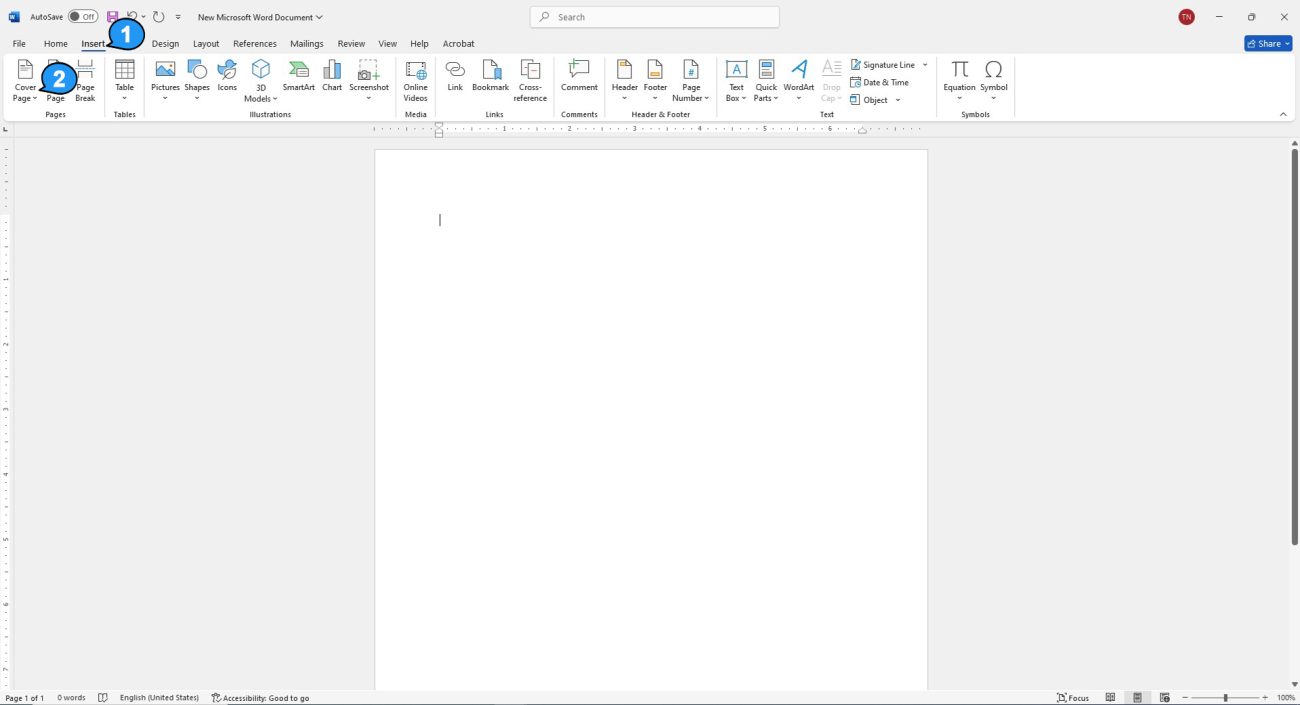
While using a preset template can save you time, there are a few reasons why it might not be the best option:
- Overused designs: Like common PowerPoint or website templates, preset cover pages can look generic and lack a personal touch.
- Inconsistent formatting: Designing your own title page allows you to set your own formatting. If you add a preset cover page after finishing your document, the layout may not match the rest of your work.
- Limited structure: Word’s preset cover pages use text boxes to hold your text. Although you can move and resize them, the structure is restrictive and not as flexible as regular text on the page.
- Not suitable for all documents: Some of Word’s fancier templates might not be appropriate for more formal documents, like academic papers, where a simpler title page would be more fitting.
- Less customization: Creating your own title page gives you more freedom to display your text exactly the way you want it, without being limited by template designs.
Use Styles to Format Your Text
The first step in creating an impressive title page is to use or customize text styles. You can find the “Title” style in the Style Gallery (located in the Home tab on the ribbon). Simply click on it before, during, or after typing your main title to apply the style.
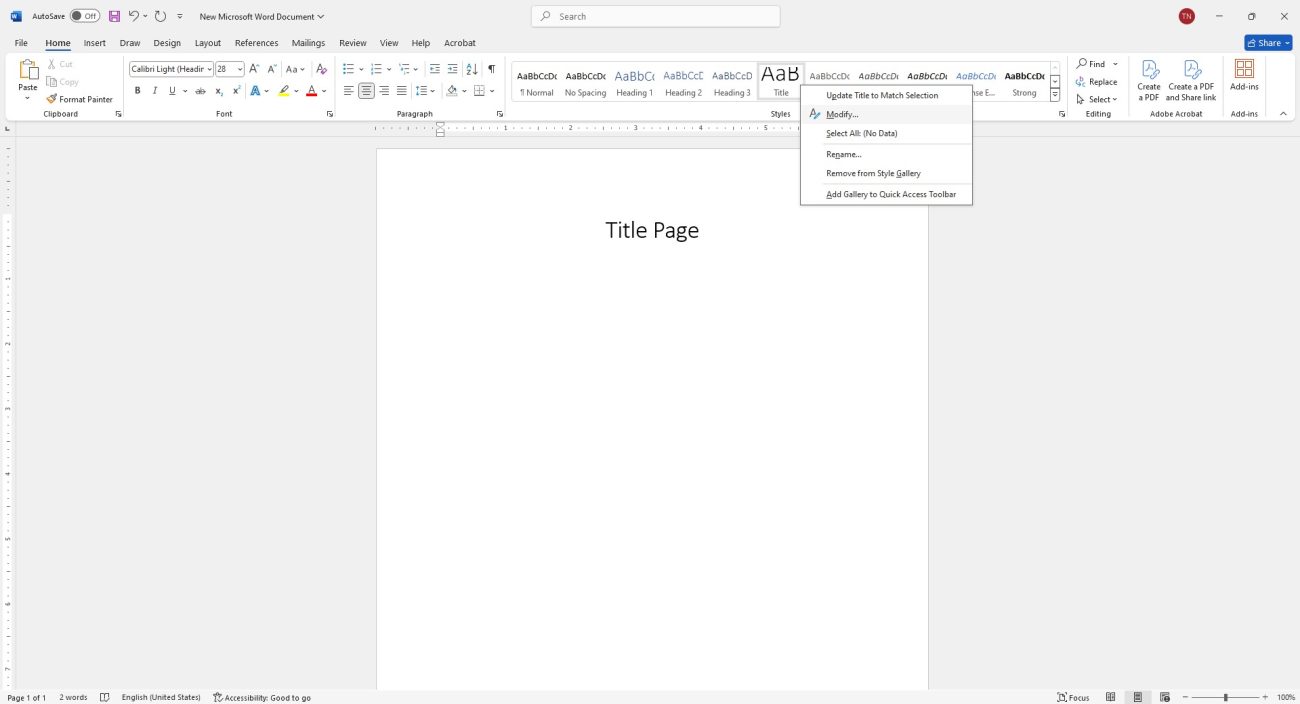
Next, you can adjust the style settings to customize your title. I recommend the following settings:
In the “Modify Style” dialog box, click on Format, then select Font.
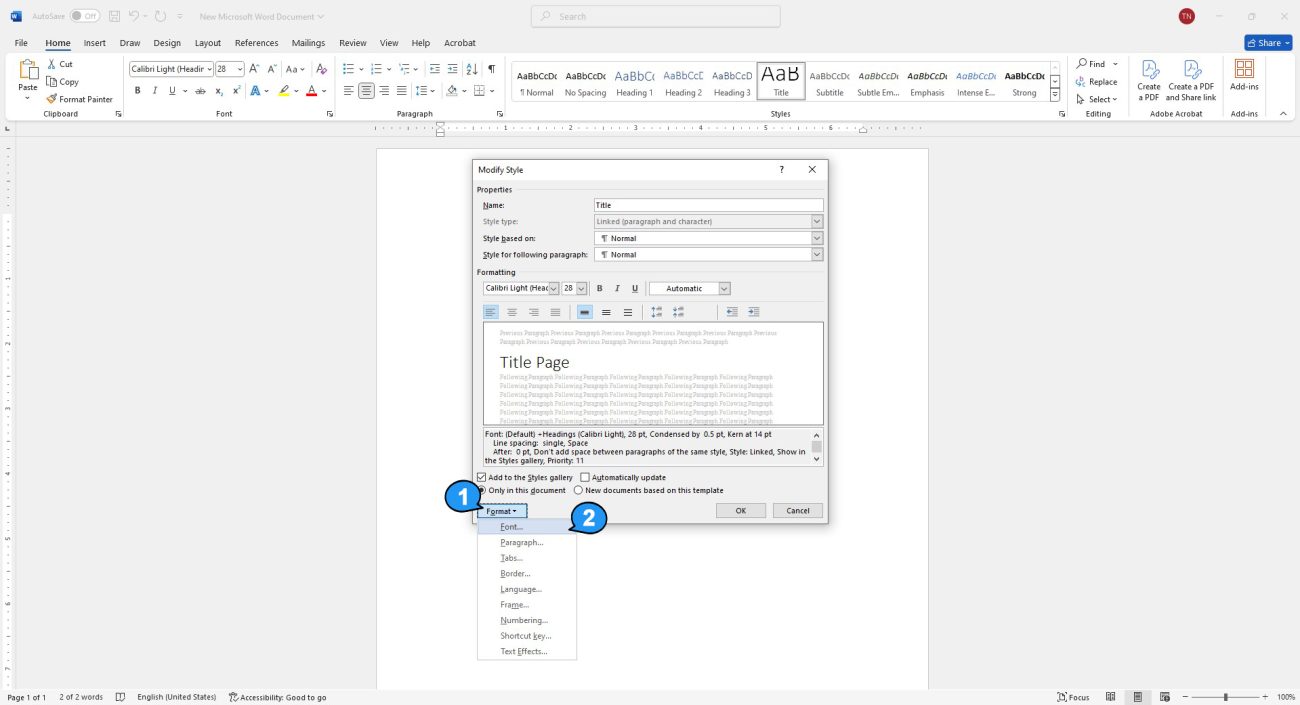
In this section, change the font to bold and set the size to 72 pt (or another large size, but not too large!). This will help your title stand out.

By default, Word condenses the text in the Title style to make it stand out from the rest. However, since I’ve chosen a larger font size, I don’t need the text to be condensed. To fix this, open the Advanced tab, set the Character Spacing to Normal, and click OK to apply your changes.
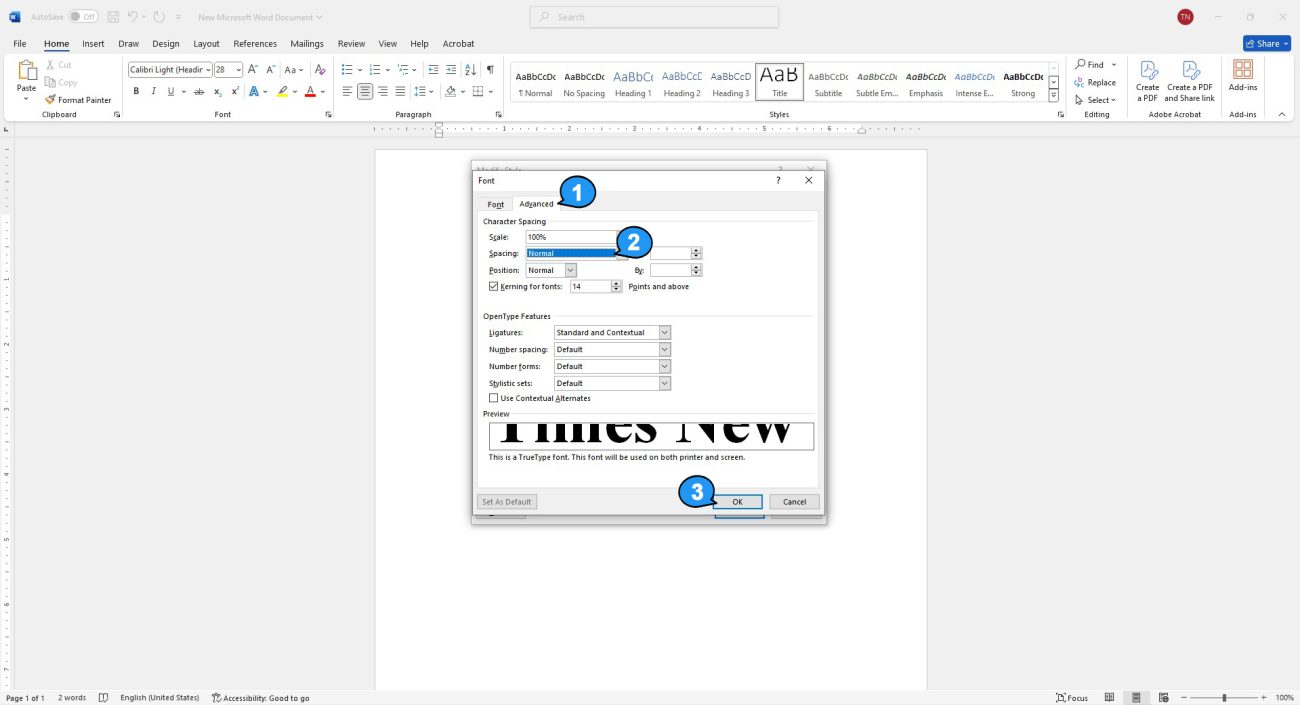
With the “Modify Style” dialog box still open, click Format > Paragraph to open the Paragraph settings. Here, change the Spacing After to half of your chosen font size. For example, since I selected a 72 pt font, I’ll set the spacing to 36 pt. Then, click OK to apply the changes.
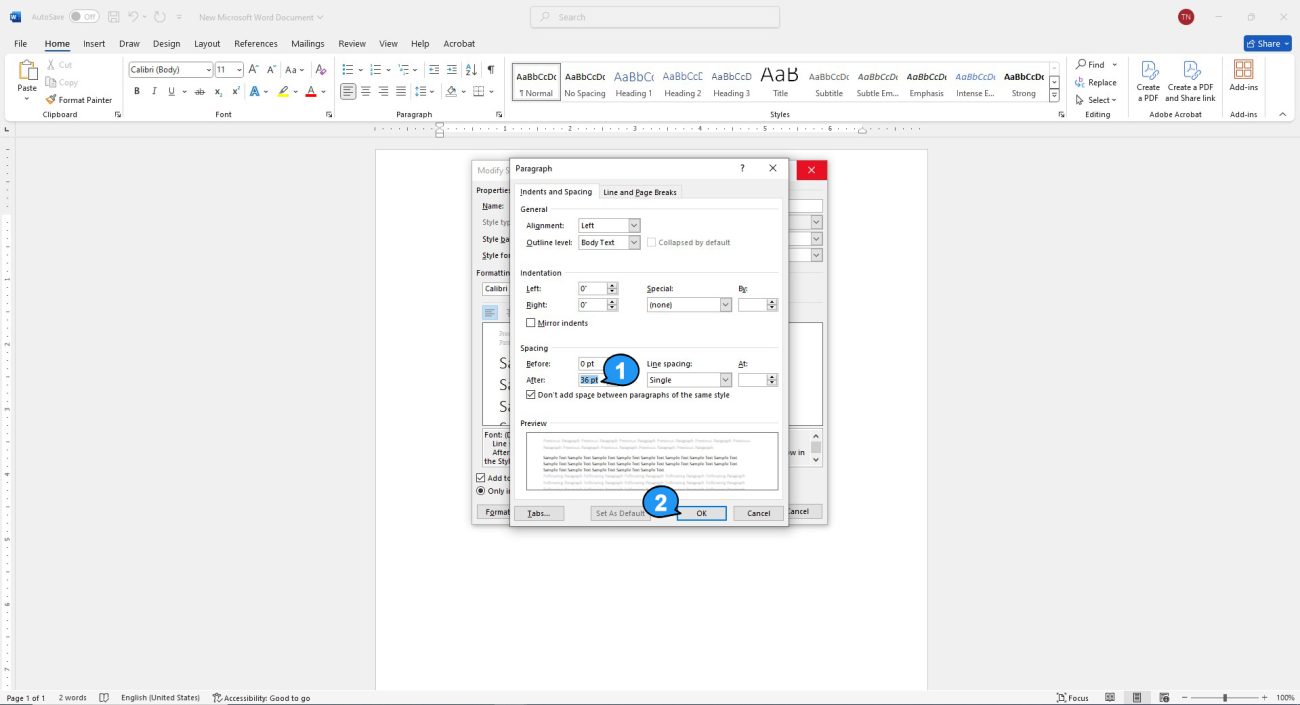
Now, press Enter and type any additional text below your title (such as your name, a subheading, or anything else you like). You can apply the same formatting steps to this text. For example, I’ve used Word’s Intense Quote style and adjusted the font size to 20 pt.
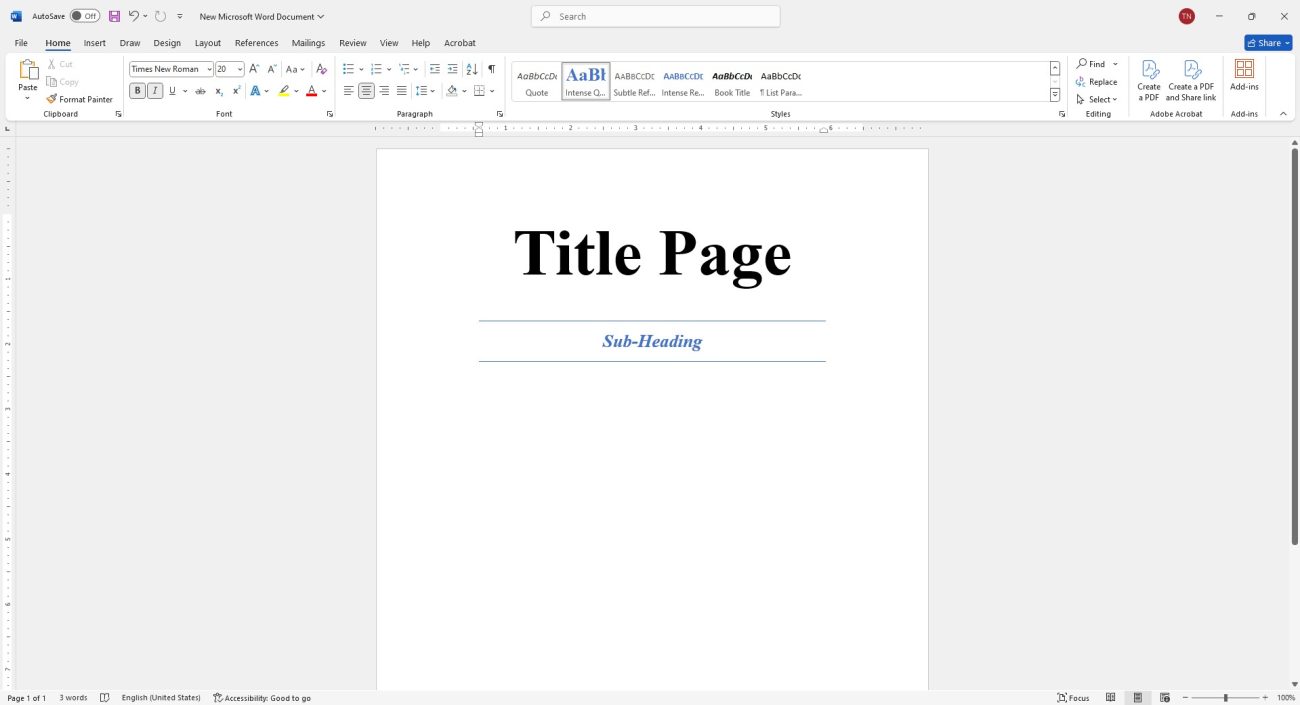
Add a Section Break
To format your title page separately from the rest of your document, you need to add a Section Break. Place your cursor at the end of the last word on your title page, then go to the Layout tab on the ribbon, click Breaks, and select Next Page.
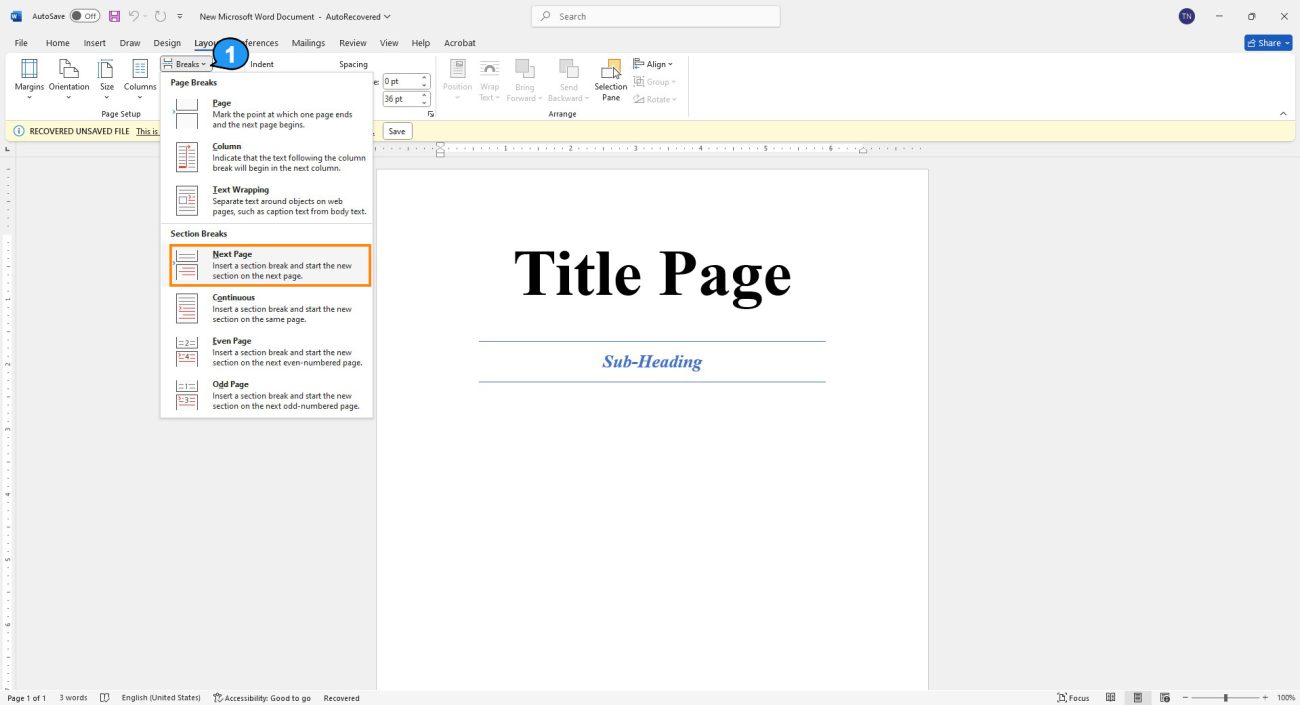
This will create a second page in your document, separated from the title page by an invisible section break. If you click the Show/Hide (¶) icon in the Home tab, you’ll see where the Section Break was added. Click the ¶ icon again to hide these markers.
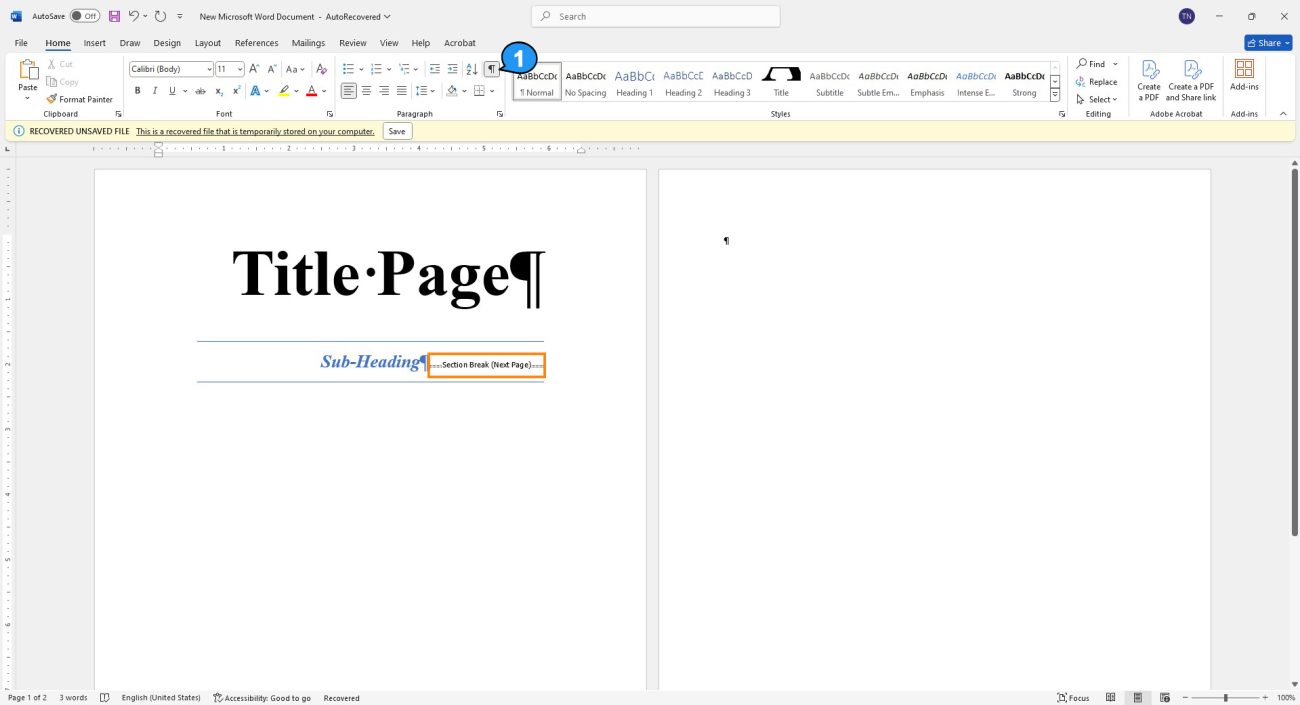
Add a Page Border
A page border can enhance your title page. To add one, place your cursor anywhere before the Section Break you just added, then go to the Design tab on the ribbon and click Page Borders.
In the dialog box that appears, adjust the border’s Settings and Style to your preference. I chose a simple box with a solid, thin line, but you can customize it as you like. Most importantly, be sure to select the Apply To drop-down and choose either This Section or This Section – First Page Only. This step is crucial because, without it, the border will be applied to every page in your document. That’s why we added the Section Break earlier.
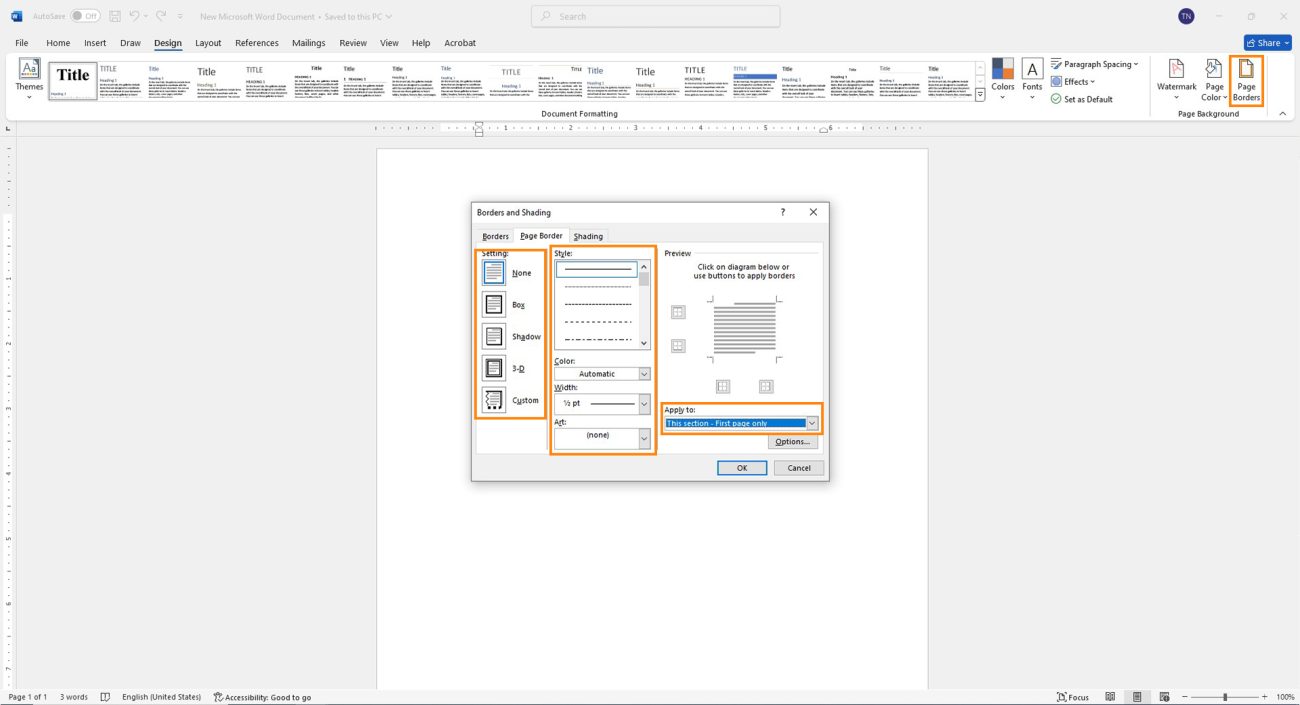
When you’re done, click “OK” to see the outcome.
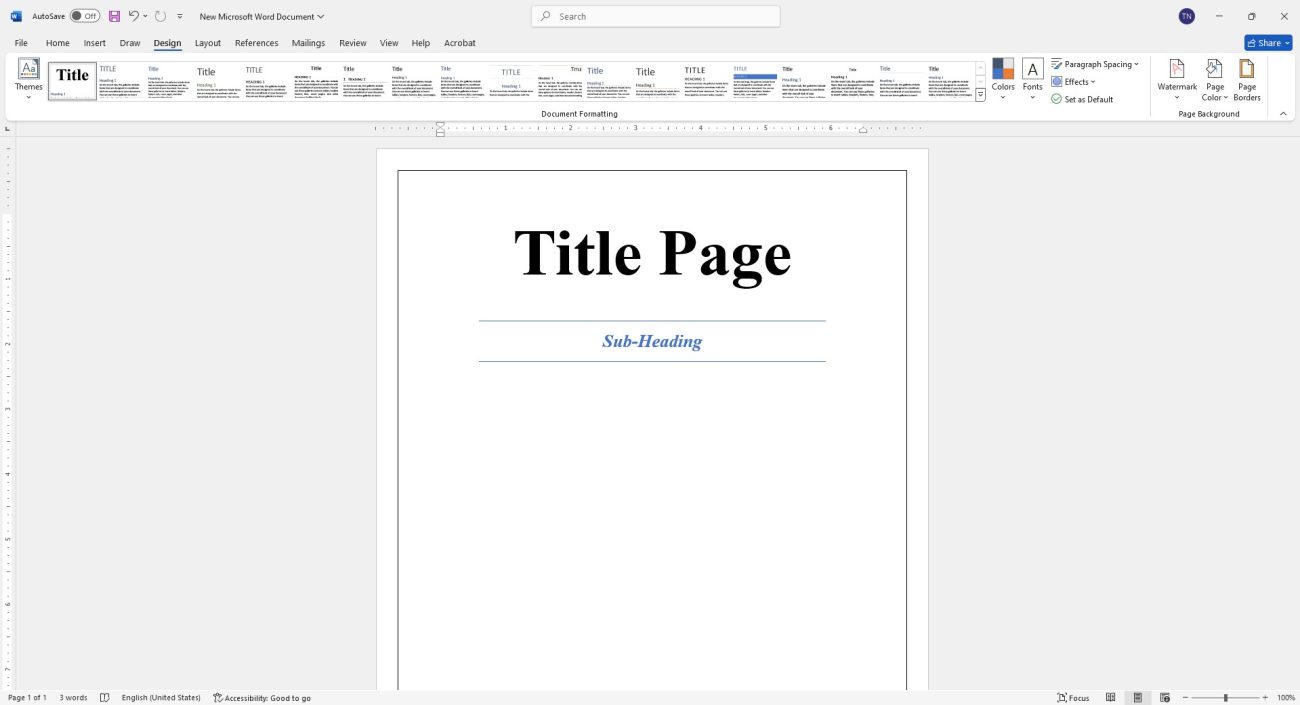
Adjust the Page Alignment
Currently, the text is aligned at the top of the page, but a more professional title page aligns the text in the center. To do this, place your cursor anywhere in the text you’ve typed, then go to the Layout tab and click the Page Setup icon in the bottom corner of the Page Setup group.

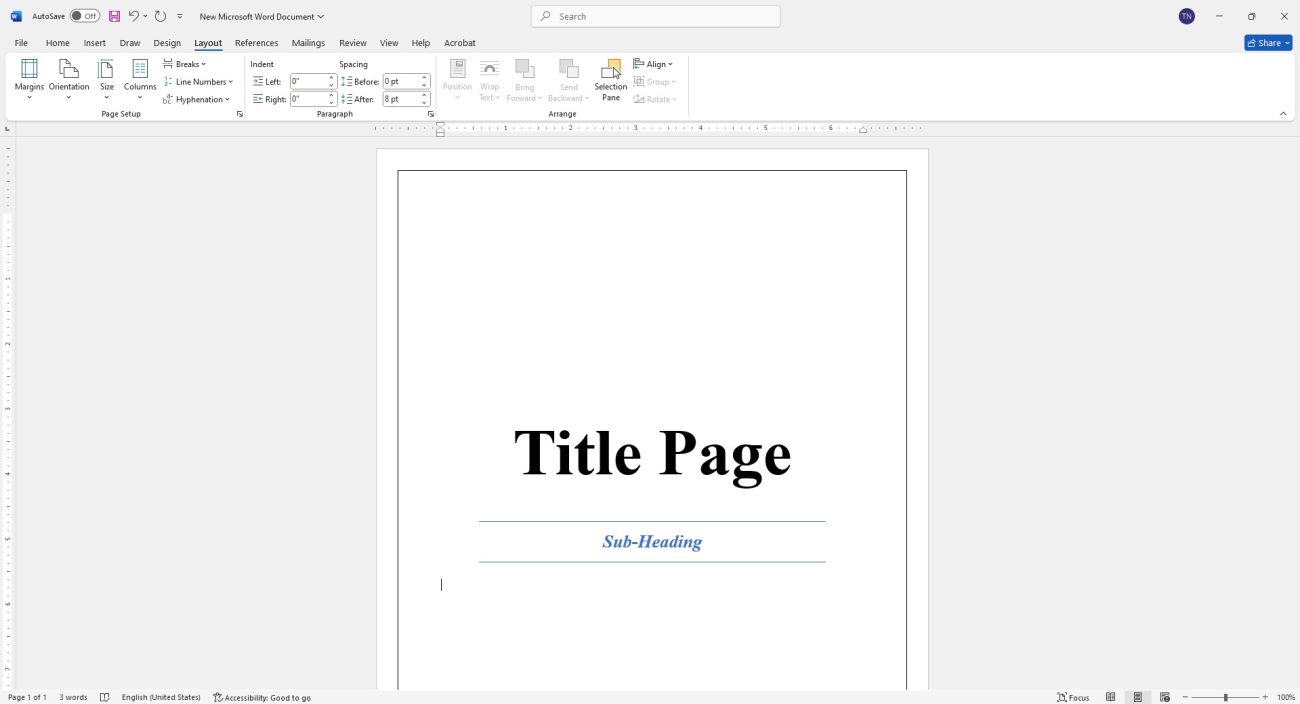
Now that your cover page is impressively formatted, be sure to apply similar settings to the rest of your document to maintain a professional look throughout.
Unlock powerful features with a genuine Office 2021 Professional Plus Key – get the best deal at the lowest price today!